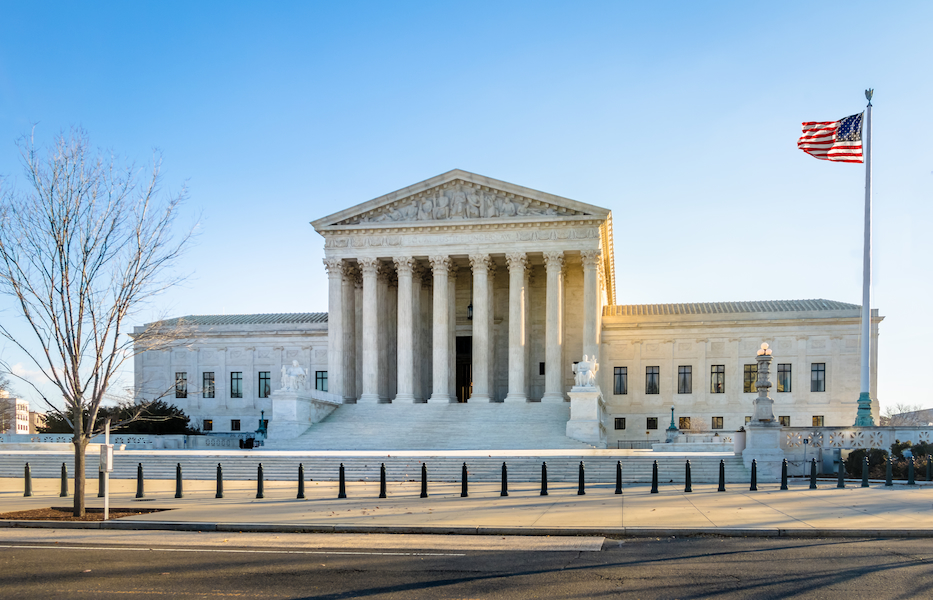Davis v Bandemer Held Courts Can Decide Partisan Gerrymandering Claims
Historical
In Davis v Bandemer, 478 U.S. 109 (1986), the U.S. Supreme Court held that held partisan gerrymandering claims were justiciable. However, the justices failed to agree on a legal standard to address them.
Facts of the Case
In 1981, the Indiana Legislature reapportioned its districts pursuant to the 1980 census. At that time, there were Republican majorities in both the House and the Senate. The reapportionment plan provided 50 single-member districts for the Senate and 7 triple-member, 9 double-member, and 61 single-member districts for the House. The multimember districts generally included the State’s metropolitan areas.
In 1982, appellee Indiana Democrats filed suit against state officials, alleging that the 1981 reapportionment plan constituted a political gerrymander intended to disadvantage Democrats, and that the particular district lines that were drawn and the mix of single-member and multimember districts were intended to and did violate their right, as Democrats, to equal protection under the Fourteenth Amendment.
In November 1982, before the case went to trial, elections were held under the new plan. Democratic candidates for the House received 51.9 percent of votes cast statewide, but only 43 out of the 100 seats to be filled. Democratic candidates for the Senate received 53.1 percent of the votes cast statewide, and 13 out of the 25 Democratic candidates were elected. In Marion and Allen Counties, both divided into multimember House districts, Democratic candidates drew 46.6 percent of the vote, but only 3 of the 21 Democratic candidates were elected. Subsequently, relying primarily on the 1982 election results as proof of unconstitutionally discriminatory vote dilution, the District Court invalidated the 1981 reapportionment plan, enjoined appellants from holding elections pursuant thereto, and ordered the legislature to prepare a new plan.
Majority Decision
The Court reversed. By a vote of 6-3, the Court held that “political gerrymandering cases are properly justiciable under the Equal Protection Clause.” Justice Byron White wrote on behalf of the majority, which included Justices William Brennan, Thurgood Marshall, Harry Blackmun, Lewis Powell, and John Paul Stevens. In support of the court’s ability to consider partisan gerrymandering claims, Justice White wrote:
Here, none of the identifying characteristics of a nonjusticiable political question are present. Disposition of the case does not involve this Court in a matter more properly decided by a coequal branch of the Government. There is no risk of foreign or domestic disturbance. Nor is this Court persuaded that there are no judicially discernible and manageable standards by which political gerrymandering cases are to be decided. The mere fact that there is no likely arithmetic presumption, such as the “one person, one vote” rule, in the present context does not compel a conclusion that the claims presented here are nonjusticiable. The claim is whether each political group in the State should have the same chance to elect representatives of its choice as any other political group, and this Court declines to hold that such claim is never justiciable. That the claim is submitted by a political group, rather than a racial group, does not distinguish it in terms of justiciability
By a vote of 7-2, the Court went on to hold that the District Court erred in holding that appellees had alleged and proved a violation of the Equal Protection Clause. According to the Court, although the apportionment law may have had a discriminatory effect on the Democrats, it was not “sufficiently adverse” to run afoul of the Constitution.
“A threshold showing of discriminatory vote dilution is required for aprima faciecase of an equal protection violation. The District Court’s findings of an adverse effect on appellees do not surmount this threshold requirement,” Justice White wrote. “The mere fact that an apportionment scheme makes it more difficult for a particular group in a particular district to elect representatives of its choice does not render that scheme unconstitutional.”
Dissent
Justice Sandra Day O’Connor authored an opinion that concurred in part and dissented in part. She was joined by Chief Justice William Burger and Justice William Rehnquist. Justice O’Connor argued that partisan gerrymandering claims are non-justiciable, writing:
The Equal Protection Clause does not supply judicially manageable standards for resolving purely political gerrymandering claims, and does not confer group rights to an equal share of political power. … [Members]of the major political parties cannot claim that they are vulnerable to exclusion from the political process, and it has not been established that there is a need or a constitutional basis for judicial intervention to resolve political gerrymandering claims. The costs of judicial intervention will be severe, and such intervention requires courts to make policy choices that are not of a kind suited for judicial discretion. Nor is there any clear stopping point to prevent the gradual evolution of a requirement of roughly proportional representation for every cohesive political group. Accordingly, political gerrymandering claims present a nonjusticiable political question.
Previous Articles
SCOTUS Wraps Up Oral Arguments for the Term
by DONALD SCARINCI on May 17, 2022
The U.S. Supreme Court has concluded its oral arguments for the October 2021 Term. The justices hea...
SCOTUS Rules Censure of Elected Board Member Didn’t Violate First Amendment
by DONALD SCARINCI on May 10, 2022
In Houston Community College System v. Wilson, 595 U.S. ____ (2022), the U.S. Supreme Court held th...
Supreme Court Breach Is Not the First Involving Roe v. Wade
by DONALD SCARINCI on
The recent disclosure of Justice Samuel Alito’s decision purporting to overturn Roe v. Wade is ar...
The Amendments
-
Amendment1
- Establishment ClauseFree Exercise Clause
- Freedom of Speech
- Freedoms of Press
- Freedom of Assembly, and Petitition
-
Amendment2
- The Right to Bear Arms
-
Amendment4
- Unreasonable Searches and Seizures
-
Amendment5
- Due Process
- Eminent Domain
- Rights of Criminal Defendants
Preamble to the Bill of Rights
Congress of the United States begun and held at the City of New-York, on Wednesday the fourth of March, one thousand seven hundred and eighty nine.
THE Conventions of a number of the States, having at the time of their adopting the Constitution, expressed a desire, in order to prevent misconstruction or abuse of its powers, that further declaratory and restrictive clauses should be added: And as extending the ground of public confidence in the Government, will best ensure the beneficent ends of its institution.




